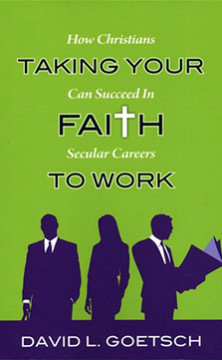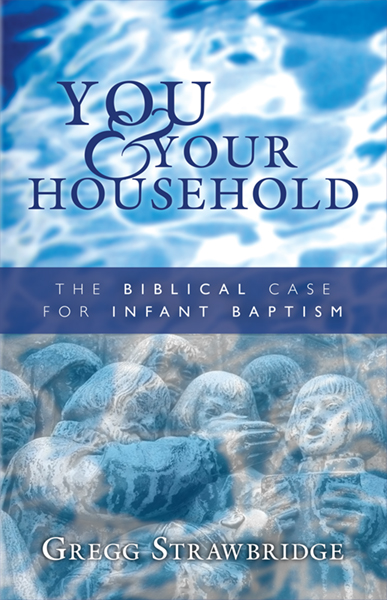In Rule 11 of non-Christian Jungian psychologist Jordan Peterson’s 12 Rules For Life, Peterson talks about how boys playing games with girls is not beneficial for boys. A girl can move up within the female hierarchy when she competes with and wins against other girls or boys. However, a boy only moves up in the eyes of his male peers when he competes with and wins against other boys. Competing against a girl puts him in an awkward position to begin with. What is he doing challenging or accepting the challenge of a girl? If he wins, he should have because he’s a guy, and guys shouldn’t lose to girls. He gains no respect from his male peers and may even be disrespected because he “beat up on a girl.” If he loses, he loses all respect from his male peers. He will never live it down. Men are created to protect women, not war with them physically or verbally.
It may
seem inappropriate to bring a non-Christian Jungian psychologist to a debate
about Scriptural truth, but what Peterson communicates fits the present
situation. Aimee Byrd, in her recent book, Recovering
From Biblical Manhood & Womanhood, challenges the church’s male-only
ordained leaders to examine themselves. A truth that is intrinsic to our
creation and recognized by Peterson but seemingly not recognized by Byrd is
that this puts male theologians and pastors like me who review her book in a
place to receive quite a bit unjustified unfriendly fire. The reactions are
visceral because of the way God created the sexes to relate. If we disagree
with Byrd, Byrd is a female martyr and we are misogynistic. Men shouldn’t be
“attacking” a woman. Social media will explode with all sorts of condolences
for her and condemnations for the patriarchy that “attacked” her. If we agree
with Byrd, we forfeit historic and (I believe) Scriptural positions of the
church in the area of intersexual dynamics within the world and the church. Men
tend not to treat women the same as other men, generally speaking, when it
comes to games or debates. We know that we will draw the ire of both female and
male feminists, and, quite frankly, sometimes it’s just not worth the hassle.
Because I believe that this book has the potential to be influential in a church culture already rife with feminist tendencies, I enter this fray with a few other men who have gone before me to review this book. Byrd’s title and content reveal her ax to grind with the Counsel of Biblical Manhood and Womanhood (CBMW). Andrew David Naselli’s review does a good job answering Byrd’s critique of CBMW’s positions as well as pointing out biblical flaws in her work. Mark Jones’s review is quite deferential but shows several errors in the way Byrd constructs her biblical-theological approach to the issues of intersexual relationships. (Scot McKnight will, no doubt, be seen as a champion for women because of his endorsement in the book blurb and his review in Christianity Today.)
As these
men point out, there are glaring omissions in Byrd’s treatment of the subject.
Byrd doesn’t deal with many of the Scriptural passages that address head-on the
issues of intersexual relationships in the world and church. This may be
because she believes that this is a simplistic “Biblicist” approach.
Biblicists emphasize proof texting [sic] over a comprehensive biblical theology. What often happens unintentionally is that the Biblicist readers become their own authority, since they often don’t notice they are also looking through their own lens of preconceived theological assumptions. Indeed, this is something we all need to be aware of in our Bible interpretations. The troubling teaching of biblical manhood and womanhood has thrived under this rubric of popular Biblicist interpretive methods. (159)
Apparently, Byrd’s
biblical-theological approach is so advanced that it can omit key passages that
deal directly with these issues. There is no discussion of 1Timothy 2 or
1Corinthians 11. There is a treatment of 1Corinthians 14 and the issue of women
keeping silent in church, which she turns on its head by saying that women
really can speak in the gathered assembly in some type of leadership in the
worship service as long as it is not the sermon. The command to “let them ask
their husbands at home” is conveniently left out of the exegesis. (231-2)
The reviews by Naselli and Jones do
a good job pointing out the obvious deficiencies of RBMW. My review will
overlap theirs at points, but I want to deal with what I see as some of the
more fundamental, presuppositional issues of intersexual relationships
throughout creation and in the church.
Whose House Are We In?
If you are familiar with the book
at all, by this time you know about the yellow wallpaper, a trope she uses
throughout the book. As she explains in the Introduction, the image comes from
a nineteenth-century novella by Charlotte Perkins Gilman entitled, The
Yellow Wallpaper. The wallpaper is a metaphor for the hermeneutical
structures and strictures that determine the way we have understood the place
of women, “the female voice,” in Scripture, and, thus, in the church.
Byrd’s mission is to peel away the yellow wallpaper that distorts our
understanding.
As mentioned in the quote earlier,
Byrd acknowledges that we all come to the Scriptures with our “own lens of
preconceived theological assumptions,” and for that reason, we need to
take care in approaching the Scriptures and be ready to have those assumptions
changed. I whole-heartedly agree with that sentiment. But that forces us to ask
the question, With what preconceived theological assumptions is Byrd
approaching the text?
Byrd gives her history with CBMW’s
literature and trying to be a godly woman in light of what she learned from
these men. Her assumptions changed. She triangulates herself above the fray now,
being neither complementarian nor egalitarian. (121) The reader is asked to
believe that Byrd has no wallpaper of her own anymore; that she is looking at
the Scriptures through purely objective eyes. But the reader must ask, How much
has literature such as The Yellow
Wallpaper, written by a feminist, affected Byrd’s view of Scripture? How
much has the general American feminist milieu colored Byrd’s thinking? Many of
the views she espouses share much more in common with egalitarian feminism than
they do with the historic Christian church’s interpretation of the callings of
men and women. Byrd has her own wallpaper.
Battle For The Center?
In an attempt to prove to the
radical feminists that God’s word is not an “androcentric text that lacks
female contribution,” (91) Byrd directs the reader to hear the “female voice”
of Scripture through figures such as Ruth, Deborah, Huldah, and others. She
strives to prove that the male and female voices “operate synergetically in
Scripture” (94, 126) as opposed to being at war with one another. However, her
approach to prove synergism is to adopt language that pits the voices against
one another.
Borrowing primarily from Richard
Bauckham, Byrd speaks of the Scriptures in terms of gynocentric versus
androcentric voices. (51) Throughout Part 1, she refers to “gynocentric
interruptions” in an “androcentric” text when the stories of women such as Ruth
(chapter 2) or the Canaanite woman (88) are told. All of these women are
“overturning stereotypes.” (e.g., 90)
Though she wants to show how men’s
and women’s voices work together, with the “centric” and “interruption”
language, she is leaving the reader with this civil war of the sexes. Men’s
voices dominate and the women have to “interrupt.” At best this leaves the
reader confused as to whether or not men and women in Scripture are at war with
one another or if they do work synergistically as Byrd proposes. At worst, Byrd
disproves her own point by the language she uses, leaving the reader to think
that women are oppressed and must fight–even in Scripture–to have their voices
heard.
The concerns for the female voice
being heard in the church are Byrd’s primary concern. This is done through
teaching. “Any divinely ordained differences that men and women have do not
prohibit women from teaching. It would be disobedient to Scripture to withhold
women from teaching.” (174) Make no mistake about it, what she means by this is
that she believes women ought to be able to teach adult men. That is the
way the female voice is truly heard. She leaves the reader with the sense that
women being relegated to teaching children and other women is some sort of inferior
teaching. “While some give the nod for women to teach other women and children,
they are sending the message that this is ancillary work to be done.” (188) Are
they “sending the message,” or is that only what she is thinking? What if
women, because of their God-given nature as women, are generally better than
men at teaching children and other women? Is that a deficiency or just a
difference?
Must a woman formally teach men to
have the female voice heard in the church? Were not the female voices of Lois
and Eunice heard through Timothy as tradents of the faith? (2Tim 1.5) Are not
older women specifically exhorted to teach younger women how to be good wives
and manage their homes? (Titus 2.3-5) Is there any married pastor who is not
influenced by his wife in his teaching ministry? Byrd leaves the impression
that if women aren’t able to teach men, then the church is an oppressive
patriarchy, squashing the female voice. Just because women aren’t able to do
exactly what Byrd thinks they ought to be able to do, doesn’t mean that the
female voice doesn’t contribute to the work of the church. I’m sure that there
are outlier churches that completely squash female voices, but I’m not aware of
any conservative churches that “withhold women from teaching.” I’m not even
certain that is possible, considering the fact that mothers and wives have
tremendous power with children and husbands.
Women have tremendous power. The
adage, “the hand the rocks the cradle rules the world” has much truth
in it. The female voice is heard throughout the church. It doesn’t have to be
heard in one specific area of teaching adult men to be heard.
The tenor of Byrd’s book exudes a
battle for equality … in everything but the pastorate. She rightly concludes
that men, and men only, should be ordained representatives of Christ in the
preaching of the Scriptures. (231) Of course, everything else in leading the
liturgy should be open to females (except the pastoral prayer of the church,
232 n. 54). Much of this push for equality derives from her conclusions drawn
from certain linguistics describing certain women in the church. Paul speaks of
women as participating with him in the ministry, giving them special status.
(149) Byrd spends a great deal of time on Phoebe, whom Byrd assumes Paul entrusts
with the explanation of the letter to the church of Rome. (146-51; 213ff.) She
also speaks of Junia as an apostle. (223ff.; Naselli deals well with this in
his review) Paul uses the same verb translated “work hard” about women as he
does his own ministry. Because Paul uses similar words to speak about himself
and women, because he speaks about Euodia and Syntyche as laboring side by side
with him in the gospel (Phil 4.2-3), the reader is to assume, I suppose, that
Paul has eradicated various callings for the sexes. So, if they “work hard” in
the gospel as Paul does, does that mean that they occupy the same calling in
the church? If Junia is actually a woman and is called an apostle in Romans 16,
might that mean something different for a female than it does a male? If we
look at those avoided passages in 1Timothy 2 and 1Corinthians 11 where the same
apostle is speaking, we learn that he doesn’t commend women to occupy the same
callings as men. They are … dare I say it … complementary. Women labor as women.
Men labor as men. Both are working toward our common mission, but both must
stay in their lanes.
Transcending The Sexes?
We are, indeed, working toward a
common mission. Byrd affirms this by speaking of our joint telos. (111) She follows this up by saying, “However, this is not
an androgynous calling.” (111) Both egalitarians and complementarians are
critiqued in their views of the sexes. Because egalitarians don’t recognize
distinctions, women feel undervalued because there is no development of the distinct
masculine and feminine contributions. Complementarians set up femininity and
masculinity as something to strive for in itself. Byrd shows us a more
excellent way: a transcendent sexuality.
Several times she speaks of
“transcending” our genders or sexuality. Jesus did it (122), and we should too.
Quoting Andrew Bartlett approvingly, Byrd writes, Does your church witness to
the fact that ‘relationships in the church are shaped by the new creation,’
where ‘created gender distinctions remain in existence, but are also
transcended’?” (231) Indeed, “There are no exhortations in Scripture for men to
be masculine and women to be feminine. As the Roman Catholic theologian
Dietrich Von Hildebrand points out, the calling for both man and woman, our telos, is ‘to be transformed in Christ,
to become holy and glorify God, and to reach eternal communion with God…. The
specific tone of masculinity and femininity must appear by itself’ as we strive
together toward this same mission.” (111) “We are not directed to biblical
manhood nor biblical womanhood; we are directed to Christ. Our aim is to behold
Christ, as his bride, as fellow sons in the Son.” (132) We need a communion
between males and females that is “platonic–intimate but nonerotic.” [sic] (172) We are being prepared for
eternal communion with the triune God and one another, (109, 233) and it
appears that transcends our sexuality.
Don’t get Byrd wrong. Males and
females have “distinct relational responsibilities that color our discipleship. Men will never be daughters, sisters,
aunts, wives, or mothers. Women will never be sons, brothers, uncles, husbands,
or fathers.” (116, emphasis mine) Even though males and females are colored by
their sexuality in discipleship, masculinity and femininity are cultural
constructs, not commands in Scripture (111). She agrees with Mark Cortez that
there are cultural norms that are associated with our gender that should not be
considered essential to our sexuality. (123)
What does transcended sexuality
look like? If it is not some form of androgyny, then what is it?
By deconstructing the whole
“masculine-feminine” paradigm while still upholding a distinction between the
sexes, Byrd reduces the difference between men and women to physiology. Male =
masculine and female = feminine are tautologies. “I simply am feminine because
I am female.” (114) “I don’t need to act
like a woman; I actually am a woman.”
(120, emphasis original) The result of this little trick is to eliminate the
distinctive responsibilities of men and women. Oh sure, our maleness or
femaleness “colors” our discipleship. One is a sperm donor and the other
provides a womb for gestation and glands for nursing, but those are the
accidents but not the essence of our existence; they “color” our
discipleship, but they are not specific callings into which we are to grow. In
some sense, we need to grow out of them.
So, if everything a man does is
masculine, how does Paul’s characterization of men as “effeminate” in
1Corinthians 6.9-10 fit into this construct? What does Paul mean when, in
1Corinthians 16.13, he says literally, “Act like a man?” (Byrd prefers other
translations such as “be courageous,” “valiant,” or “brave.” 112) Must men act
a certain way that is truly manly? If everything a man does is masculine by
definition, why characterize certain behaviors as acting like a man and others
as being non-manly?
If it is true that men are called
to act in certain ways that are considered manly or masculine, then would it
not also be true that women must act in certain ways that would be considered
womanly or feminine? Would these ways of acting not correspond with the
creation and commands for the woman just as they do for the man? The attempt to
deconstruct masculine and feminine into biological realities apart from
responsibilities, or making masculine and feminine merely cultural constructs
that don’t have the weight of Scriptural responsibilities is anti-Scriptural
and dangerous.
Though Byrd would have us believe
that we are not commanded to grow toward biblical manhood or Biblical
womanhood, (132) I must ask, Are Christian virtues asexual? Does love,
faithfulness, et al. look different
in a woman than it does a man? Christian virtues are embodied in males and
females differently. Of course, there is overlap between the two, but they
express themselves beautifully in our different orientations toward God, one
another, and the world around us.
For instance, Byrd speaks of how
she is a fierce protector (125-6). I don’t doubt it. Women are protectors, but
they are not protectors in the same way men are protectors. Women protect
children, and men protect women. This is the way God set things up in Genesis.
This is also why it upsets sports and the military to go coed. Add a female to
the situation with males, no matter how much she wants to be treated as an
equal, she won’t be. You, the reader, know this instinctively. It is a created
part of us to the smallest strand of DNA in our bodies. It can’t be transcended
into some semi-gnostic functional androgyny.
Seeking to show our equality before
God through our culpability in sin, Byrd addresses the fact that Eve was
“equally culpable for her sin, as God directly addressed her.” (116) “Equally
culpable” is tricky. Yes, Eve was culpable for her sin, but she is not culpable
in the same way as Adam. Adam failed his responsibility as a man, leaving Eve
vulnerable to be deceived. Eve committed a sin of inadvertency or being led
astray. Adam committed a high-handed sin. Because of Adam’s responsibility as a
man, it is through him that sin and death entered the world, not through the
woman (Rom 5.12). The man and the woman are judged differently based on their
created and commanded differences, and the sins of each have consequences
corresponding to their sins. The woman’s consequences correspond to her calling
in child-bearing and in relationship to the man. The man’s consequences
correspond to his orientation to the world. (Gen 3.16-19) Is each responsible
for his and her sin? Yes. But the sin and its consequences correspond to the
calling of males and females as males and females.
The promise of redemption is the
restoration and glorification of the man and the woman, not the transcending of
their sexuality into a communion that virtually eliminates the distinctions.
The beauty is in the differences. Our sexualities are neither an immaturity that
we must eventually transcend nor a remnant of sin that must be eliminated.
These created differences between
us orient us toward the world in different ways, both needed to complete our
common mission. While our differences do speak to our callings as husbands and
wives directly, they also speak to our broader responsibilities in our dominion
mandate. We know that our created differences establish a certain order in the
church. Paul says this clearly in 1Timothy 2.8-15 and 1Corinthians 11.2-16.
Even though, as Byrd rightly says, not all women are to submit to all men,
(105) the world is gloriously patriarchal. The Man, Christ Jesus, is Lord of
the world. His bride, the church, rules with him, but does so as the bride and
not as the husband. Jesus hears the feminine voice, but he gets the final say
(cf.107).
This patriarchal structure that
governs the new creation is to be imaged in the world. Men should be leading societies,
the church, and the home. Isaiah says that when women and children lead, that
is an indication that a society is being punished. (Isa 3.12) Men are created
to be oriented to the creation in a way that women are not. Women are created
to be oriented toward men in a way that men are not oriented toward women.
(1Cor 11.8-9) This is creation glorified, not transcended.
Because a woman can do something doesn’t mean that she ought to do it any time or in any space
she wants. The same goes for a man. We have God-given lanes to stay in to use
the abilities God has given us in the structures in which he has commanded us
to use them. Not to stay in our lanes as men and women will be debilitating to
our kingdom mission. Consequently, we don’t need to recover from biblical manhood and womanhood. We
need to grow into and delight in the beauty of them.
Despite her best efforts to
distance herself from egalitarianism, Byrd, in the end, practically promotes a
baptized version of egalitarianism. In the end, I don’t think Byrd has a good
eye for redecorating the church, so she needs to be careful about ripping down
wallpaper in the church.
Read more
























